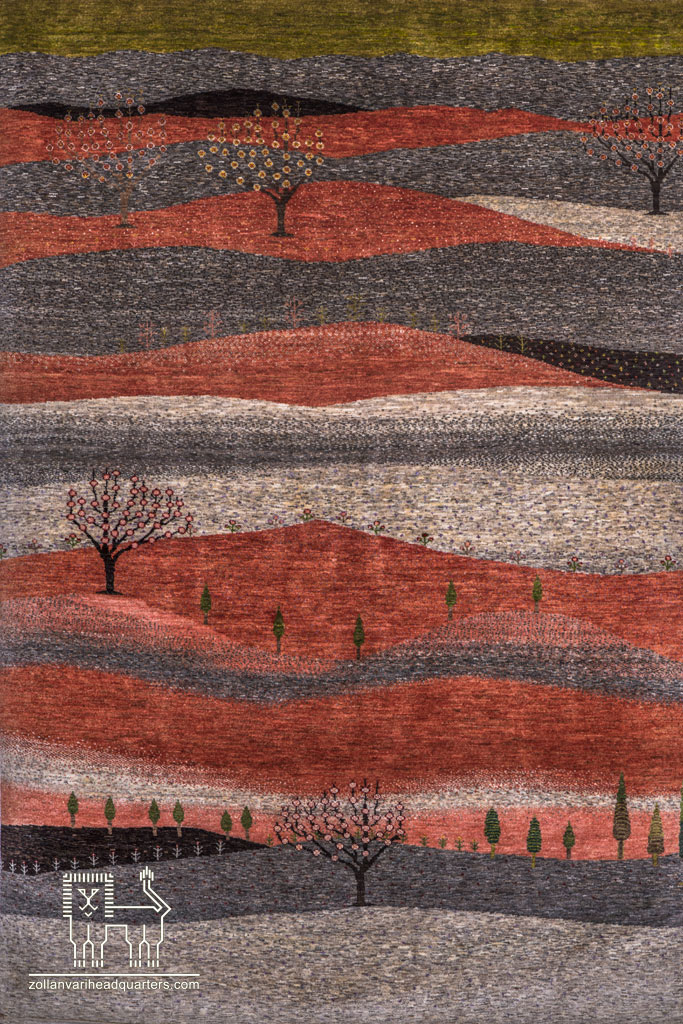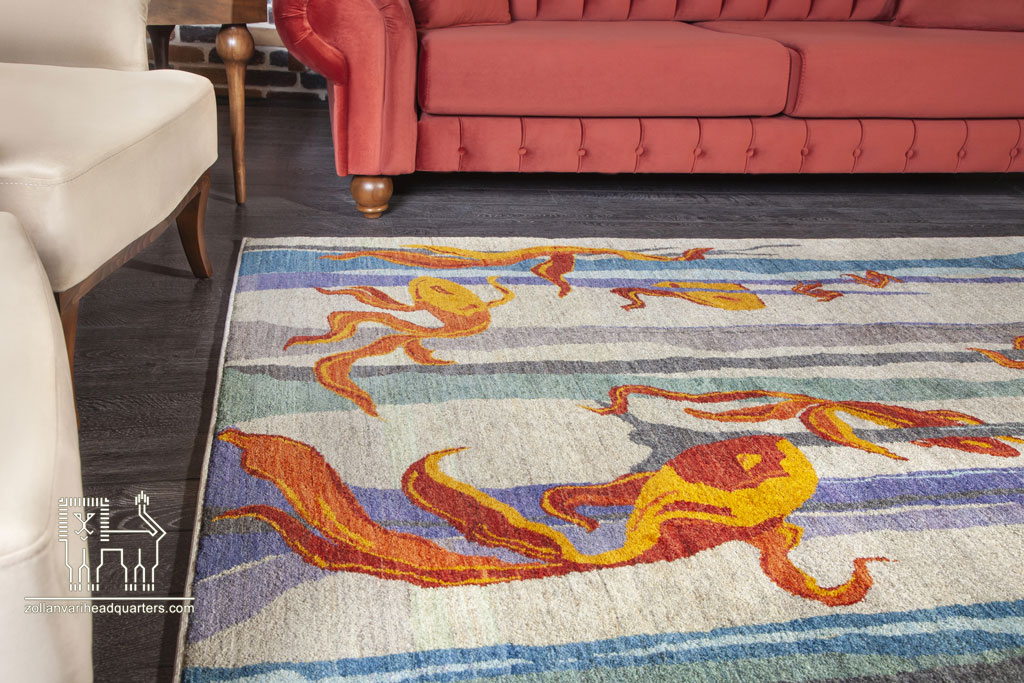The Evolution of Gabbeh Design: Connecting Ancient Motifs with Contemporary Art
Gabbeh, one of the most valuable manifestations of Iranian carpet weaving art, not only narrates the culture and lifestyle of Iran’s nomads but also serves as a canvas for the creativity and personal emotions of its weavers. Over decades, Gabbeh has transformed from a simple traditional floor covering into a sophisticated and contemporary artwork that has attracted the attention of domestic designers, collectors, and art enthusiasts worldwide. This transformation aligns with changing global tastes and innovations implemented by companies like Zollanvari in the design and production of these pieces.
Roots in Tradition: Mental Design and Inspiration from Nature
Originally, nomadic Gabbehs were woven inspired by natural elements, the surrounding environment, and everyday life. Female weavers created mental designs without using pre-drawn patterns, incorporating simple geometric shapes, animals, trees, and even ethnic stories. These motifs were not only visually beautiful but also carried emotional, cultural, and symbolic meanings.
For example, “lion” motifs symbolized courage, “checkerboard” patterns represented order within simplicity, and colors such as red and blue symbolized life and spirituality in the worldview of nomadic weavers. The weaver was essentially an artist who depicted the story of their life on the woolen canvas of the Gabbeh with their own hands.
The Beginning of Change: A Fresh Look at an Ancient Art
From the late 20th century and simultaneously with the entry of Iranian carpets and Gabbehs into global markets, the approach to Gabbeh design also evolved. Global tastes, especially in Europe and America, leaned towards simpler, more geometric, and minimalist patterns. This created an opportunity to redefine Gabbeh within modern frameworks.
In this regard, some brands and artists sought to preserve the traditional structure of Gabbeh while making changes in pattern and color to harmonize it with contemporary décor needs. It was here that modern arts such as Bauhaus, minimalism, and abstract art entered the world of Gabbeh.
Inspired by Modern Art: Broken Lines, Negative Space, Freedom in Form
One of the most important features of modern art is the freedom from conventional frameworks and emphasis on personal feeling and perception. These features align well with the mental weaving philosophy of Gabbeh. Consequently, Gabbeh designers, especially at companies like Zollanvari, began employing this new visual language:
- Use of simple geometric shapes such as squares, rectangles, triangles, and circles in creative and asymmetrical compositions.
- Use of limited but impactful colors like gray, turquoise blue, mustard yellow, and cream.
- Designs with negative space that allow the viewer’s eye to “rest” on parts of the pattern.
- Elimination of heavy traditional decorations, replaced by personal and abstract expression.
This approach preserved the authenticity of Gabbeh while making it more understandable and appealing to international audiences.
Zollanvari’s Role in Guiding This Transformation
Zollanvari Company, as one of the leading producers of nomadic handmade carpets, has played a prominent role in shaping this transformation. With a deep understanding of cultural heritage and global market needs, the company has been able to offer designs rooted in tradition yet aligned with the spirit of the times.
Some of Zollanvari’s innovative actions include:
- Collaboration with international contemporary designers to create collections that combine tradition and modernity.
- Creating conceptual collections inspired by global art styles such as European modern art and Japanese minimalism.
- Innovative dyeing while preserving natural colors, enhancing visual beauty and remaining committed to ecological values.
- Use of unexpected combinations like asymmetrical arrangement of motifs, empty spaces in the weave, and irregular borders.
Global Reception and Cultural Endurance
Zollanvari’s modern Gabbehs are now exhibited in prestigious international exhibitions and are used in homes, galleries, and modern architectural spaces. This success demonstrates that traditional art, when combined with innovation, can become more enduring and global than ever before.
With these developments, Gabbeh is no longer merely a nomadic floor covering but a piece of contemporary art that has carved its way from tradition into art galleries and minimal urban spaces.

Summary
The evolution of Gabbeh design reflects the ability of Iranian culture to adapt to the modern world. From rooted traditional motifs to influences from new artistic currents, Gabbeh today is a living artistic medium. Companies like Zollanvari, with deep understanding of the past and intelligent vision for the future, have built a bridge between authenticity and innovation—a bridge that has not only preserved Gabbeh art but also made it global.


Write a Comment